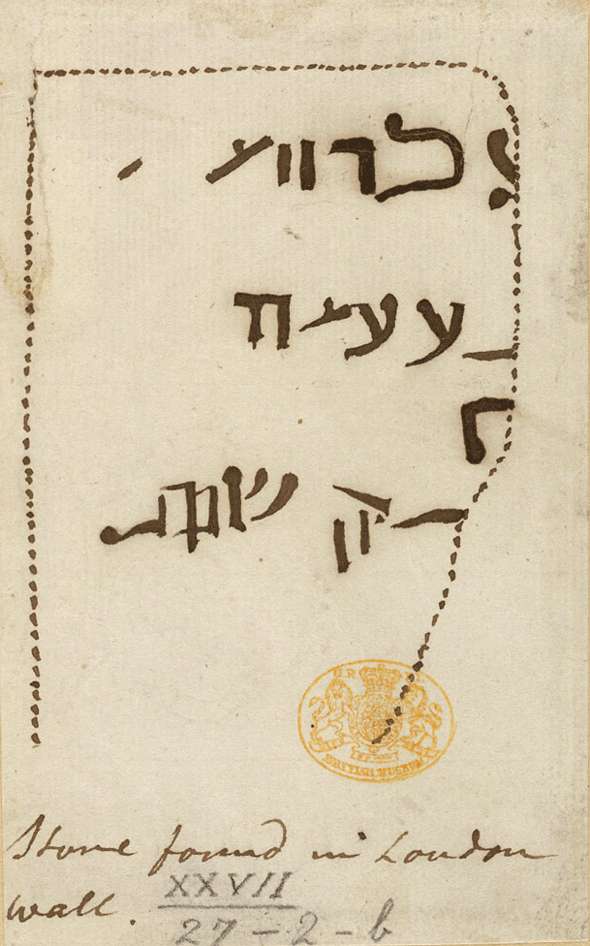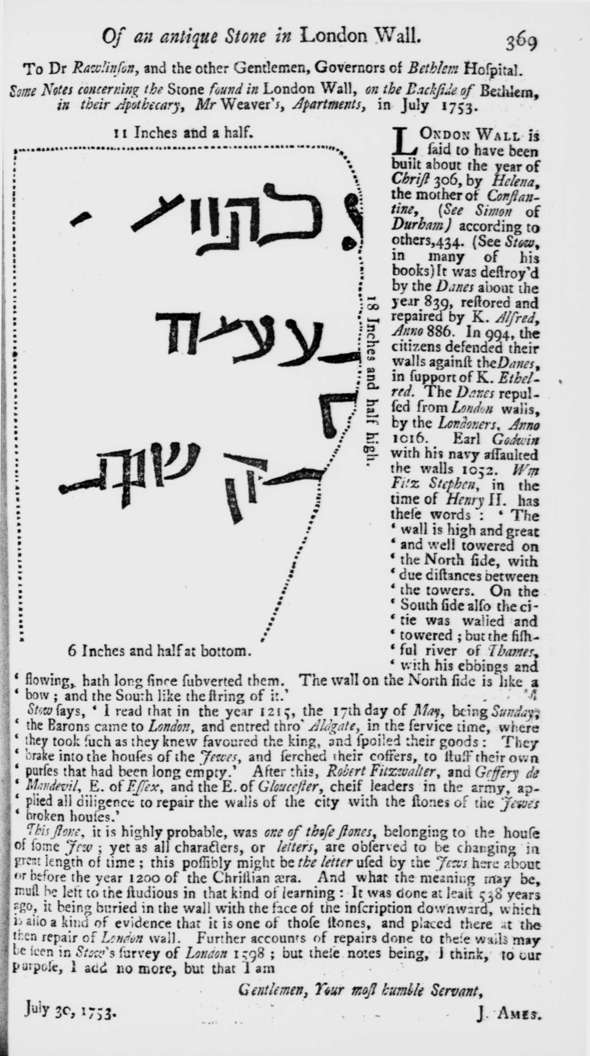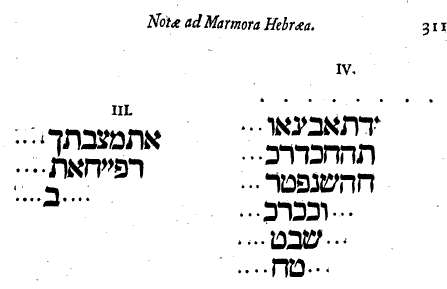Here is a drawing from 1753 of an old Hebrew inscription in a stone found in London Wall:

This find was written up in the Gentleman's Magazine of August 1753, "Of an antique Stone in London Wall."
As you can see, apparently the reason why there were stones with Hebrew inscriptions in London Wall is because in the time of King John, in1215, some rebellious barons seized Jewish property ("such as they knew favoured the king") and afterward stones from the property was used to make repairs in the wall:

However, although it was understood in 1753 as being from the time of the 1215 rebellion, Marjorie B. Honeybourne argues that they were more likely taken from the Jewish cemetery and used for city defenses after the expulsion of 1290, giving several reasons why this might be so.
This was not the first such Hebrew inscription found in London Wall. In fact, in total six have been found. "Rabbi" John Selden discussed one in 1629 (Marmoa Arundelliana, 1629 p. 177):

and H. Prideaux included discussed the same inscription and included images others in his enlargement of Selden Marmora Oxoniensa (1676, pp. 311-14):







Not sure why a Jewish house would have Hebrew writing inscribed in the walls itself. Inclined to believe the headstone theory, and that these were stone from a Jewish cemetery. Alternatively, is it possible that indigent Jews were buried at the foot of the London wall, and these were their inscriptions? This is the case in Pisa, Italy's municipal wall. To this day, if you look behind the vendors selling plastic leaning towers, you can still see the etched inscriptions in Hebrew.
ReplyDeleteThe last ones are certainly tombstones. On the one titled "Inscriptiones Hebraeae" you can see the word "sheniftar", "who died". On the one titled "Notae ad Marmora Hebraea" you can see "et matzevat", "the stone" (I think the last letter on the line is misread) as well as "sheniftar" and what is probably a misread "shanat", "the year". The first inscription is much more fragmented but it seems to have the word "shanat" in it too.
ReplyDeleteWhat's your joke with calling John Selden "rabbi"? Just a little tease about his Hebraic erudition, or allusion to some story I don't know?
ReplyDeleteWell, you know, the first thing you do is plug "rabbi john selden" into Google.
ReplyDeleteBut apart from that (I refer to the title of that book about him) Sebastian Munster actually was occasionally called Rabbi by his friends and associated, and I transferred the title.
There's also R. Herzog's snarky article about how Selden wasn't really such a talmid chochom, "John Selden and Jewish law" in a 1931 issue of Journal of Comparative Legislation and International.